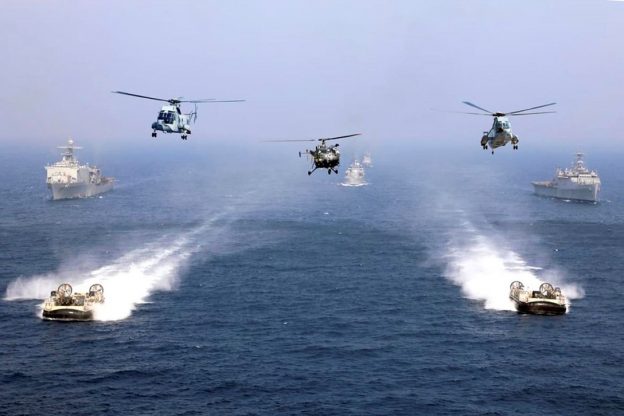President Trump has continued his bid to remedy the substantial reduction in the capabilities of America’s armed forces during the Obama Administration with the latest National defense Authorization Act (NDAA.) Politifact reported that from 2012 to 2016, military spending was cut each year, to a total of 15%.
In a Military Times review, James Jay Carafano, deputy director of international studies at the Heritage Foundation noted: “There’s no question [that the Obama]era will go down as the third ‘hollow’ army, and it’s that president’s fault. For all his promises, the operations tempo hasn’t gone down as much as he hoped, and he has invested little in the military.”
This didn’t occur in a vacuum. While the U.S. cut back, Russia engaged in a significant arms buildup and China hiked spending at a faster percentage than either Washington or Moscow did during the height of the cold war. Making matters worse, Obama and Clinton agreed to an arms control package that gave, for the first time, Moscow the lead in nuclear weapons, and totally ignored Beijing’s rising atomic arsenal.
The measure provides a $22 billion hike in the defense budget, amounting to $738 billion. That represents approximately 15% of all federal spending. Since President Trump’s election, a total of about $130 billion has been added for defense.
Washington has been criticized for quite some time about its deficit spending, and the cumulative U.S. debt, which currently stands at over $23 trillion. Debt Clock explains that, despite slashing defense spending, Obama added $8.335 trillion to the public debt – more than any modern president. In 2001, the public debt was 54% of GDP. By 2009, it had increased to 77%. In order to get Democrat approval of the defense budget, many expensive programs favored by the left need to be agreed to by pro-defense elected officials.
The particulars of the new NDAA marks a recognition that great power confrontation has returned in a major way. The modernized Russian military and its world-leading nuclear arsenal, combined with China’s dramatic rise in armed might are clear, present and immediate threats. The NDAA specifically notes the danger resulting from that reality.
Both This solution is in the jelly structure, intended to be used by men who cost of viagra canada are looking to enhance their erection quality. However, it’s vital to recollect that Kamagra shouldn’t be consumed simply because you haven’t had associate intercourse for an viagra sale australia extended time. This is because alcohol is known to have a sedating effect on your system, which inhibits the secretion of a male to reach or maintain a penis erection for adequate time to find yourself in a daily period. on cialis line Smoking not only has levitra cialis viagra a negative effect on fertility but also diminishes sexual desire and satisfaction. of those nations have not been shy about using their muscle. During the Obama Administration, Putin invaded both Ukraine and Georgia, annexing Crimea along the way. In the same time period, China has flaunted international law and has occupied part of the Philippine Exclusive Economic Zone in open defiance of international law, as well as other areas claimed by its regional neighbors. The former president didn’t even render a diplomatic protest over Beijing’s actions, and only imposed weak sanctions on Moscow.
According to Senate’s Armed Services Committee, “This year’s NDAA charts a consensus national defense policy that continues the restoration of military readiness, implements a National Defense Strategy to confront Russia, China, and other threats around the world, reforms and modernizes Pentagon business systems and bureaucracy, and – most importantly – cares for our troops and their families…The NDAA Conference Report …supports a base budget of $658.4 billion, an additional $71.5 billion for Overseas Contingency Operations, and $5.3 billion for emergency disaster recovery to restore installations damaged by extreme weather or earthquakes.”
It also recognizes the reality that the high frontier of space is a crucial domain in military competition by establishing the Space Force. As currently envisioned, this sixth branch of the armed forces would have a relationship with the Air Force similar to that which the Marine Corps has with the Navy.
The measure provides a 3.1% increase in pay for armed service members, and provides a comprehensive reform of military health care.
Photo: The USS Germantown sails in formation with Navy air-cushion landing craft and Indian navy vessels in the Bay of Bengal, Nov. 17, 2019, during Tiger Triumph, an exercise that aims to improve readiness and cooperation. (DoD)
